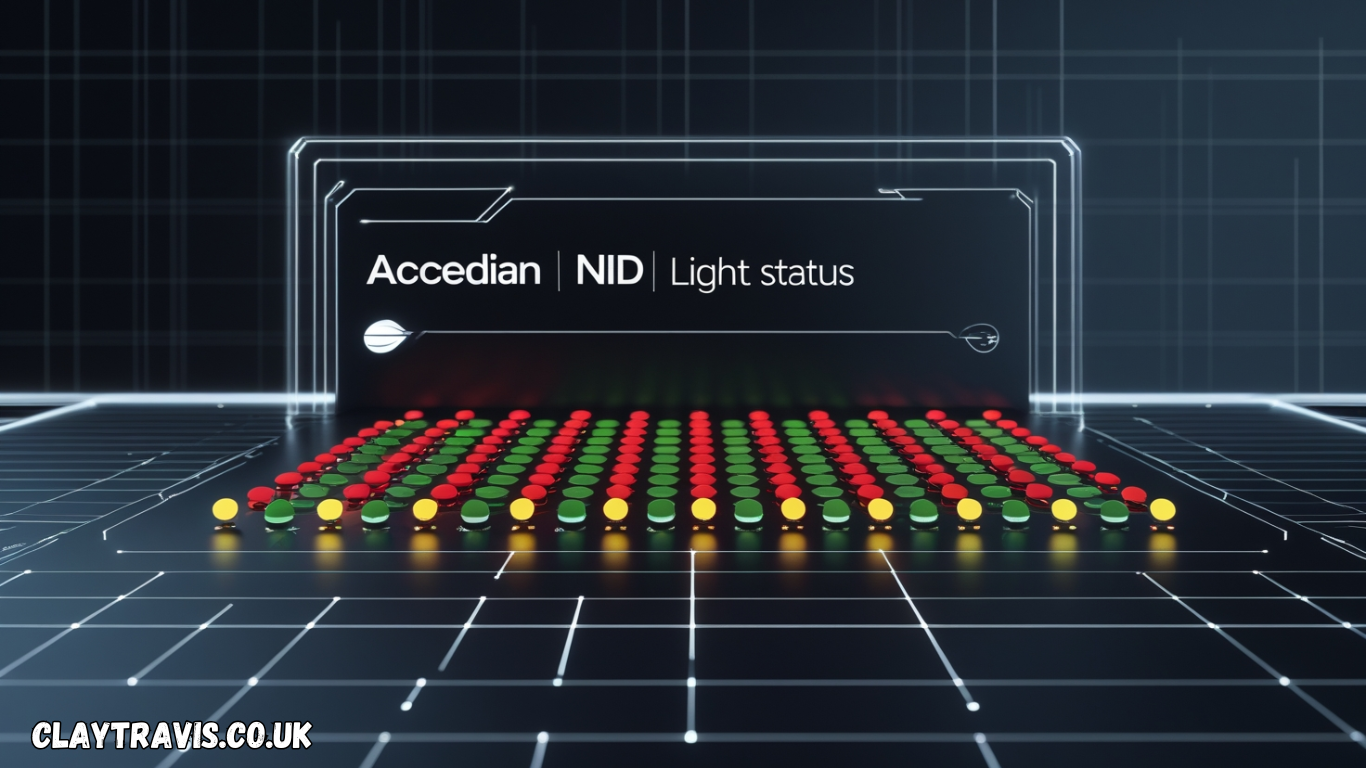Table of Contents
Introduction: What is Accedian NID Light Status?
Accedian Networks, a leader in performance monitoring and assurance, provides Network Interface Devices (NIDs) as a key part of their portfolio. These devices help organizations ensure high-quality network performance. One critical feature of these NIDs is their light indicators, or “light status,” which provide immediate visual feedback about the device’s operations and connectivity. In this guide, we will explore what Accedian NID light status means, how to interpret it, and its importance in maintaining network health.
Why Accedian NID Light Status Matters
- Quick Diagnostics: NID light status offers instant insights into network issues, allowing engineers to respond quickly.
- Network Health Monitoring: Light indicators reflect the status of connectivity, performance, and possible failures.
- Efficiency: Understanding light patterns can save time in troubleshooting, reducing network downtime.
Overview of Accedian NID
What is an Accedian NID?
A Network Interface Device (NID) is a piece of hardware used to demarcate service boundaries and ensure high-quality service delivery. Accedian NIDs are widely used in enterprise and service provider networks to monitor performance, enable Service Level Agreements (SLAs), and optimize network operations.
Key Features of Accedian NIDs
- Real-Time Performance Monitoring: Measures key metrics like latency, jitter, and packet loss.
- Service Demarcation: Separates the service provider’s network from the customer’s.
- Fault Detection and Reporting: Identifies network issues with precision.
Decoding Accedian NID Light Status
Common Light Indicators and Their Meanings
- Power Light:
- Steady Green: The device is powered on and functioning correctly.
- Off: Indicates no power or a hardware failure.
- Blinking Green: The device is in a startup or diagnostic mode.
- Link/Activity Light:
- Steady Green: Indicates an active and stable connection.
- Blinking Green: Denotes ongoing data transmission.
- Amber: May indicate a warning or degraded connection.
- Alarm Light:
- Red: Signals a critical issue that requires immediate attention.
- Amber: Indicates a minor issue that should be addressed soon.
- Off: No alarms, the device is operating normally.
- Test Light:
- Steady Green: The device is in test mode.
- Blinking: Indicates ongoing diagnostic tests.
- Off: Normal operational mode.
Troubleshooting Based on Light Status
- No Power Light: Check the power source and connections. If the issue persists, replace the power adapter or contact support.
- Red Alarm Light: Review device logs to identify the issue. Common causes include network misconfigurations or hardware faults.
- Amber Link Light: Verify the network cable and confirm the port settings.
Best Practices for Monitoring Accedian NID Light Status
Regular Inspections
- Daily Checks: Make it a habit to review the light status during routine inspections.
- Document Issues: Record any anomalies to track recurring problems.
Training Staff
- Educate Team Members: Ensure your IT team understands the meaning of light patterns.
- Use Visual Aids: Provide quick-reference guides for interpreting light indicators.
Leveraging Automation
- Remote Monitoring: Use Accedian’s software tools to monitor NID status remotely.
- Alerts and Notifications: Configure automated alerts for critical light status changes.
Benefits of Proactive Light Status Monitoring
Improved Network Uptime
By addressing issues as they arise, organizations can minimize disruptions and maintain consistent network performance.
Cost Savings
Quick identification and resolution of issues reduce the need for extensive repairs or equipment replacement.
Enhanced User Experience
Stable network performance ensures a seamless experience for end-users, boosting customer satisfaction.
Real-Life Applications of Accedian NID Light Status
Case Study: Enterprise Network Optimization
An enterprise using Accedian NIDs noticed frequent amber link lights on several devices. By investigating the issue, the team identified outdated firmware causing instability. Updating the firmware resolved the problem, leading to a 20% improvement in network reliability.
Example: Service Provider SLA Management
A service provider utilized the alarm light indicators to meet SLA commitments. By quickly addressing red light alerts, they ensured 99.9% uptime for their clients.
Common Challenges and Solutions
Misinterpretation of Light Status
- Challenge: IT teams may misread light patterns, leading to incorrect troubleshooting.
- Solution: Provide comprehensive training and use detailed manuals.
Delayed Response to Critical Alerts
- Challenge: Alarm lights may go unnoticed during off-peak hours.
- Solution: Implement remote monitoring and automated notifications.
Hardware Compatibility Issues
- Challenge: Some legacy systems may not support newer NID models.
- Solution: Upgrade hardware and ensure compatibility during deployment.
Future Trends in Accedian NID Monitoring
AI-Powered Diagnostics
Artificial intelligence can enhance the interpretation of light status, predicting potential issues before they escalate.
IoT Integration
IoT-enabled NIDs will provide more granular data and seamless integration with smart networks.
Enhanced Remote Capabilities
Future devices will offer more robust remote monitoring tools, enabling teams to address issues without physical intervention.
Conclusion: Mastering Accedian NID Light Status
Understanding the Accedian NID light status is crucial for maintaining a reliable and efficient network. By interpreting light indicators correctly and implementing proactive monitoring strategies, organizations can minimize downtime and optimize performance.Are you ready to enhance your network management skills? Start by mastering Accedian NID light status. Share your experiences and tips in the comments below, and don’t forget to explore Accedian’s resources for more insights into network performance monitoring.
